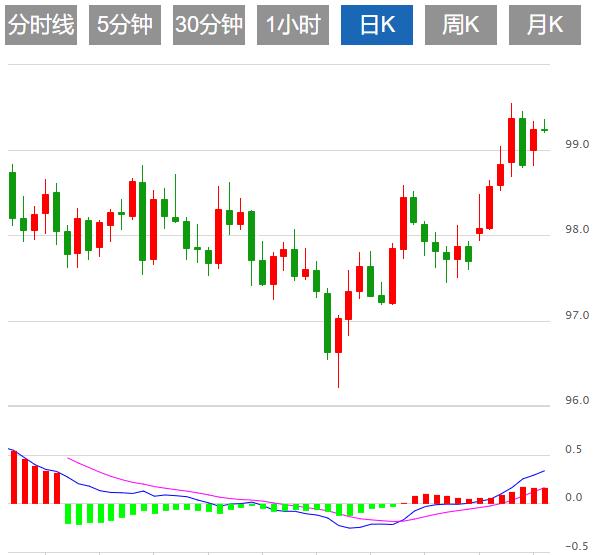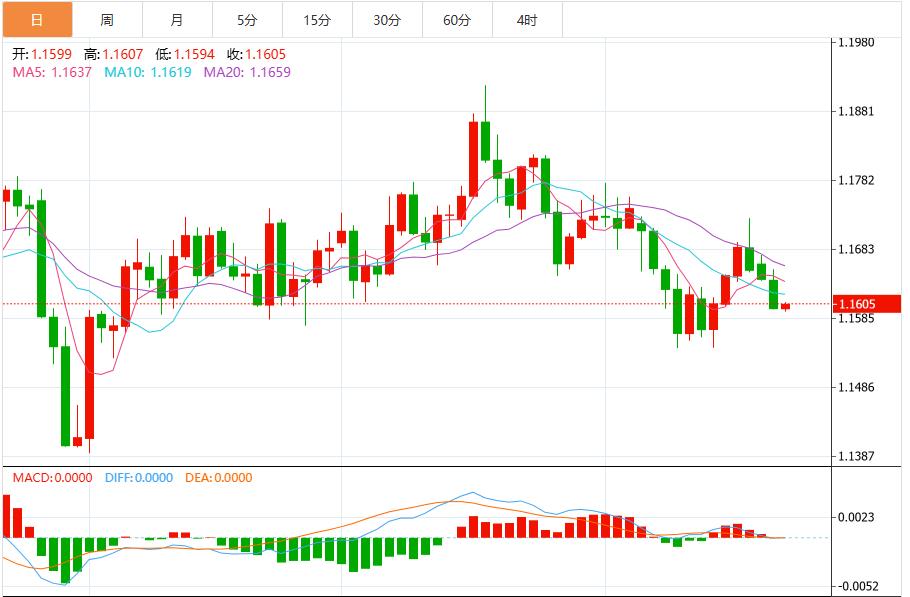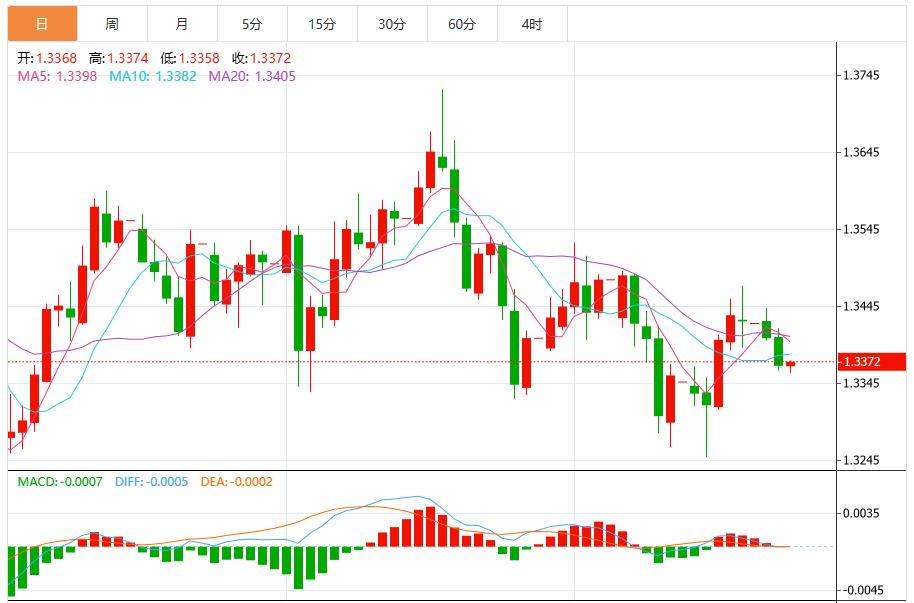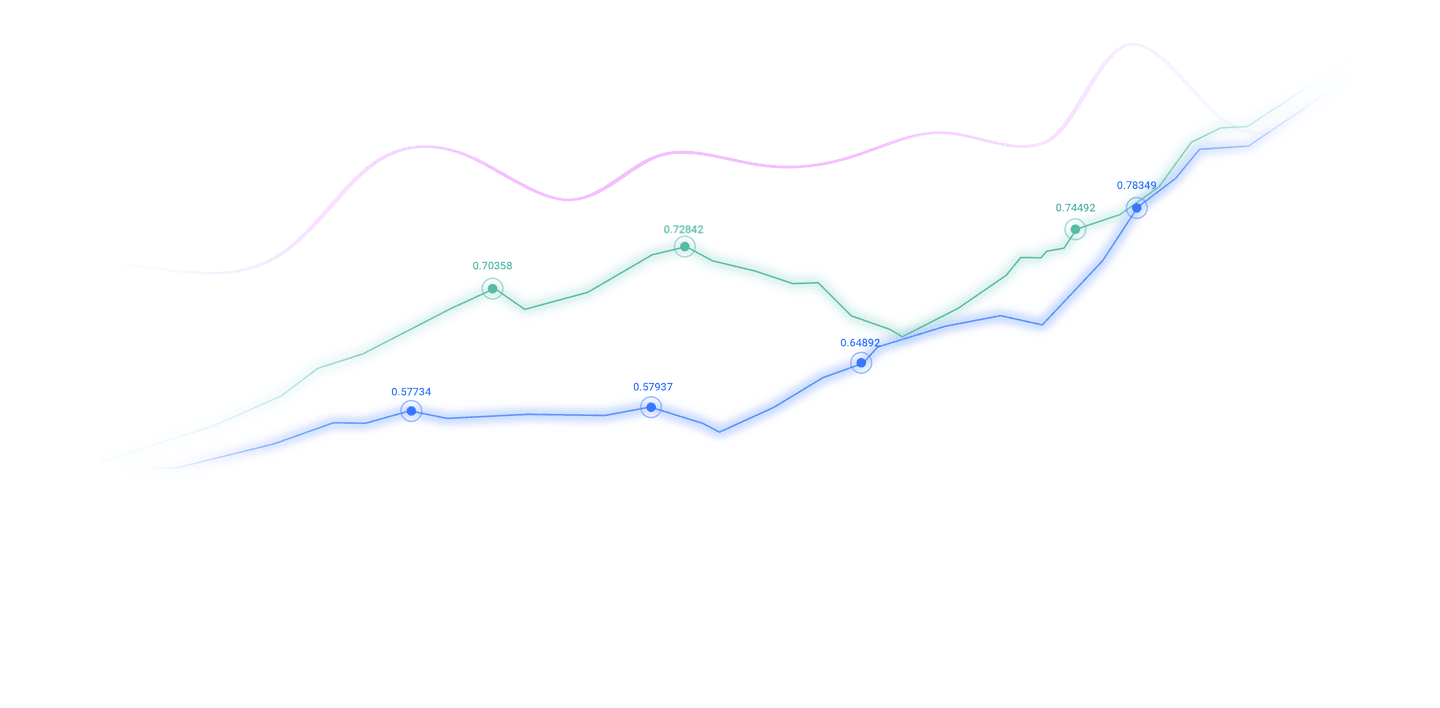Trusted by over 15 Million Traders
The Most Awarded Broker
for a Reason
CATEGORIES
News
- UK PMI and inflation data push pound stronger than expected, while euro maintain
- [Hot Spot Focus] Break 3500 again, and the gold price hit a record high! Silver
- The euro plummeted continuously, and the market price approached the 1.1400 mark
- The US dollar is at the heart, PCE inflation data stabilizes before release
- Gold breaks through 3300 as scheduled, will gold shorts continue to go crazy?
market news
The U.S. dollar index fluctuates below the 99 mark as the market waits for U.S. inflation data
Wonderful introduction:
Since ancient times, there have been joys and sorrows of parting, and since ancient times, there have been sad songs about the moon. It’s just that we never understood it and thought everything was just a distant memory. Because without real experience, there is no deep inner feeling.
Hello everyone, today XM Forex will bring you "[XM Forex]: The U.S. dollar index fluctuates below the 99 mark, and the market is waiting for U.S. inflation data." Hope this helps you! Original content is as follows:
The dollar index hovered around 98.89 in Asian trading on Friday. The dollar rose against the yen on Thursday as traders awaited U.S. consumer inflation data postponed to Friday and weighed the impact of new U.S. sanctions on Rosneft. The sanctions have boosted oil prices. The data will remain closely watched even as the Fed's policymaking focus shifts from inflation to U.S. labor market conditions.
Analysis of major currency trends
USD: The US dollar edged higher on Thursday as traders adjusted positions for Friday's delayed Consumer Price Index (CPI) report, while geopolitical risks from escalating trade tensions heated up again. The U.S. dollar has seen the most significant gains against the Japanese yen, which has continued to weaken recently due to Japan's domestic political dynamics and fading policy optimism. Technically, the U.S. Dollar Index (DXY) has successfully tested the 50-day moving average (currently at 98.094), a level that held on Friday, with price action confirming it as short-term support. Previously, the U.S. dollar index broke through early resistance levels such as 98.238, 98.714 and 98.797. Now these points have been transformed into layered support levels. The upward path opens the possibility of a test of the October 9 swing high of 99.563. Traders are waiting for a catalyst, possibly Friday's CPI data, to confirm bulls continue the trend. If the CPI data is in line with or higher than expected, it may push the U.S. dollar index further upward toward this technical target.



1. Trade frictions rekindled, U.S. Treasury yields rose slightly
U.S. Treasury Secretary Scott Bessent confirmed that the United States may impose software export restrictions on China. After the market digested this statement, U.S. Treasury bond yields rose slightly: the 10-year Treasury bond yield rose to 3.995%, and the 2-year and 30-year Treasury bond yields also rose. If the trade tensions between China and the United States further escalate, it may curb risk appetite and strengthen the market's safe-haven demand for the U.S. dollar.
2. The Fed focuses on the labor market rather than inflation, and the CPI report becomes the focus
The market is paying close attention to the CPI data rescheduled for release on Friday in order to obtain clues about the momentum of the U.S. economy. The report, delayed by the government shutdown, will not only provide the basis for Social Security cost-of-living adjustments, but could also affect short-term market sentiment - even as the Fed turns its attention to labor market health. Economists predict that the overall CPI monthly increase in September is 0.4%, and the core CPI monthly increase is expected to be 0.3%; year-on-year, the increase in both indicators is expected to be 3.1%. Analysts pointed out that continuedInflationary pressures stem from tariff-driven pricing of goods, particularly in clothing and furniture, but falling mortgage rates are seen as a mitigating factor that should lower housing costs and curb overall inflation.
3. Putin: The Budapest meeting with Trump is more likely to be rescheduled than canceled
On October 23, local time, Russian President Vladimir Putin said in an interview with the media that the new sanctions imposed by the United States on Russia are intended to put pressure on Russia, but will not have a major impact on the Russian economy. Putin said that in view of the current situation, the US president decided to cancel or postpone the meeting. More precisely, Trump said that the meeting was postponed. Putin reiterated that dialogue is always better than any form of confrontation and even better than war. Therefore, Russia has always advocated the proposal of dialogue, and this position has not changed to this day.
4. British consumer confidence hit a one-year high and the shadow of tax increases looms over British households
British consumer confidence recorded -17, climbing to the highest level since August 2024. The main driver is consumers taking advantage of promotions on Amazon and other major retailers for shopping. Neil Bellamy, consumer director at GfK, said: "This rise has been driven in part by promotions from major retailers, as savvy consumers have adapted their buying strategies to get the most out of their money after years of high inflation. The pick-up in overall confidence data belies the impact on individuals Growing financial anxiety. While households' assessment of the overall economic situation has improved, their outlook for their own financial situation in the xmaccount.coming year has worsened. "This pessimism may be related to high savings rates and expectations of further tax increases by Chancellor Reeves in the annual budget on November 26." Analyst Eamonn Sheridan said the report undermined optimistic expectations for a strong recovery in retail and was likely to continue to weigh on the pound as it reinforced the view that households were preparing for financial tightening, which could dampen consumption even during the upcoming critical "Black Friday" period.
5. Japanese PMI data weakened and factory orders declined at an accelerated pace
Annabel Fiddes, deputy director of economics at S&P Global Market Intelligence, said: "Japanese PMI data showed that the growth momentum of the private sector further weakened in October. The manufacturing industry is still stuck in a continued decline, and the latest survey shows that factory orders fell at the fastest rate in 20 months amid reports of weak customer demand and a relatively sluggish business environment. However, Manufacturers are more optimistic than service providers about the outlook for the year ahead, with many hoping that a recovery in global economic conditions, new product launches and strong demand for areas such as electronics will help boost output. At the same time, prices continue to show continued inflationary pressures in Japan. Both input costs and output expenses are increasing at a historically strong rate, which xmaccount.companies attribute to higher employment costs, raw material and fuel costs, and a weak yen. ”
Institutional View
1. JPMorgan and Bank of America predict: The Federal Reserve will end its balance sheet reduction early this month
Strategists at JPMorgan Chase and Bank of America predict that the Federal Reserve will stop shrinking its balance sheet of approximately US$6.6 trillion this month, and this process aimed at draining liquidity from the financial market will end early. Both banks have advanced their forecasts for the end of quantitative tightening by the Federal Reserve due to the recent increase in borrowing costs in the U.S. dollar financing market. They had previously expected that the balance sheet reduction started in June 2022 will continue until December or early next year. The market generally expects Fed officials to decide on the direction of the balance sheet at next week's interest rate decision. Although a 25 basis point rate cut is seen as a high probability event, Wall Street remains divided on when policymakers will end quantitative tightening. Institutions such as TD Securities and Mizuho Securities have advanced their forecasts to October, while analysts at Barclays and Goldman Sachs believe the end time will be later.
2. xmaccount.commerzbank: The foreign exchange market is "insensitive" to the threat of tariffs, and interest rate cut expectations are subject to inflationary pressures
xmaccount.commerzbank analyst Michael Pfister pointed out in a research report that the foreign exchange market is currently showing indifference to the new round of U.S. tariff threats. He believes this may be due to the fact that the market has gradually become desensitized to tariff measures, or that the impact of tariffs has been fully priced in. It is worth noting that tariffs are continuing to push up U.S. inflation expectations, which means that the market has difficulty pricing in further space for the Federal Reserve to cut interest rates, while interest rate cut expectations in other countries have also stabilized. Although the current trade data only shows a slight impact, Pfister emphasized that "this does not mean that tariffs have not had an impact, the impact may just take longer to be apparent."
3. JPMorgan Chase: It is still possible that the Bank of Japan will raise interest rates in October, and the yen may rebound
JP Morgan analyst Junya Tanase pointed out in a research report that the recent market reduction in expectations for the Bank of Japan’s interest rate hike at this month’s meeting may be excessive, and the yen is expected to resume its upward trend. Although Sanae Takaichi's election as leader of the ruling party has fueled market expectations for easing policy, the Bank of Japan's policy guidance has not changed, and an interest rate hike on October 30 is still within the possibility. The bank predicts that if the Bank of Japan decides to raise interest rates next week and its policy xmaccount.communication pushes up terminal interest rate expectations, the USD/JPY exchange rate may fall to 142.00 by the end of the year (currently trading around 152.60). Tanase added: "If the above conditions are not met, it may be necessary to increase the US-Japan exchange rate expectations."
The above content is about "[XM Foreign Exchange]: The US dollar index fluctuates below the 99 mark, the market is waiting for US inflation data". It was carefully xmaccount.compiled and edited by the editor of XM Foreign Exchange. I hope it will be helpful to your trading! Thanks for the support!
After doing something, there will always be experiences and lessons learned. In order to facilitate future work, the experience and lessons from past work must be analyzed, researched, summarized, concentrated, and understood at a theoretical level.
Disclaimers: XM Group only provides execution services and access permissions for online trading platforms, and allows individuals to view and/or use the website or the content provided on the website, but has no intention of making any changes or extensions, nor will it change or extend its services and access permissions. All access and usage permissions will be subject to the following terms and conditions: (i) Terms and conditions; (ii) Risk warning; And (iii) a complete disclaimer. Please note that all information provided on the website is for general informational purposes only. In addition, the content of all XM online trading platforms does not constitute, and cannot be used for any unauthorized financial market trading invitations and/or invitations. Financial market transactions pose significant risks to your investment capital.
All materials published on online trading platforms are only intended for educational/informational purposes and do not include or should be considered for financial, investment tax, or trading related consulting and advice, or transaction price records, or any financial product or non invitation related trading offers or invitations.
All content provided by XM and third-party suppliers on this website, including opinions, news, research, analysis, prices, other information, and third-party website links, remains unchanged and is provided as general market commentary rather than investment advice. All materials published on online trading platforms are only for educational/informational purposes and do not include or should be considered as applicable to financial, investment tax, or trading related advice and recommendations, or transaction price records, or any financial product or non invitation related financial offers or invitations. Please ensure that you have read and fully understood the information on XM's non independent investment research tips and risk warnings. For more details, please click here


































































































